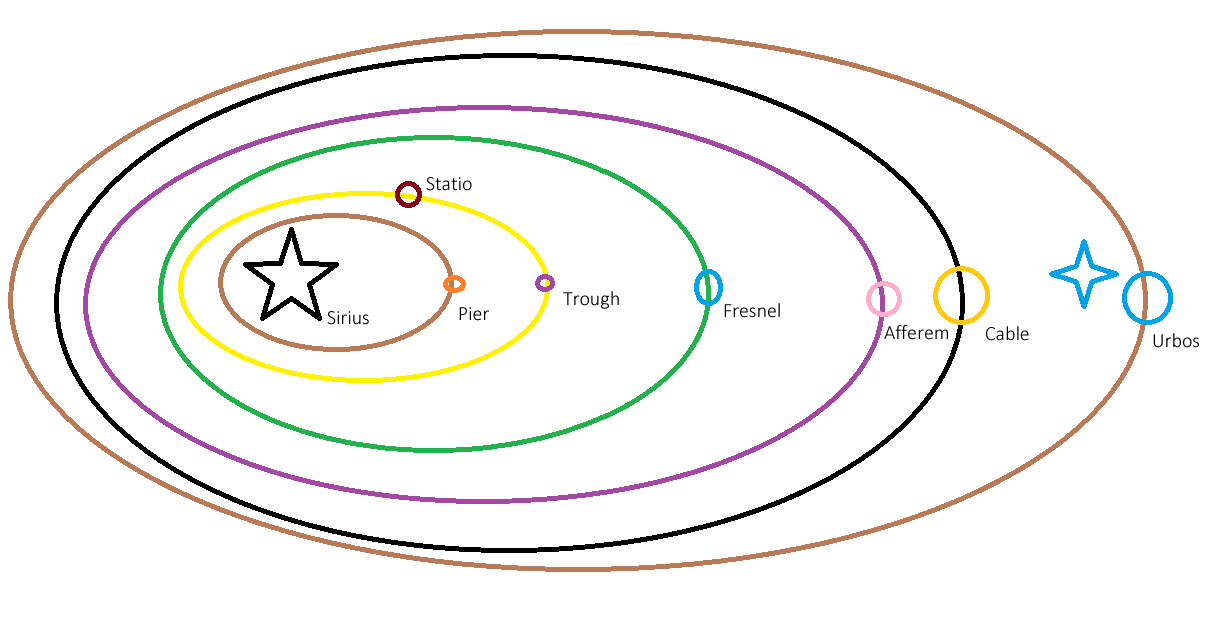 There are 7 planets in the solar system, and in order from closest to furthest from the star Sirius they are:
There are 7 planets in the solar system, and in order from closest to furthest from the star Sirius they are:
- Pier, the most technologically advanced planet, required a set up of multiple ozone-emitting pillars to strengthen the atmosphere due to its closeness to the blue sun.
- Trough, the smallest planet, co-orbiting with Statio. It was typically used as a refueling point for ships. It has an abnormally high amount of mineral deposits and so is also the system’s most prominent mining planet. Highly toxic gas permeate the atmosphere due to this and most people require entire hazard suits to live here.
- Statio, co-orbiting with Trough. The first planet chosen for terraforming. The second most populated planet. The birthplace of a rebellion years ago. One that was brutally stomped down in retaliation from Siriopus. Has struggled to recuperate after it. The Terraforming granted the planet with very fertile ground and so it is the main food supplier for the entire empire.
- Fresnel, shattered planet. Before the fall of transportation, the researchers realized that Fresnel had some odd Hecalictic properties under its skin and began to dig underneath its surface to try and understand Hecalia all the more. When a massive explosion occurred and shattered the crust of the world into multiple different orbits around the planet.
- Afferem, The home planet of Siriopus, the capital of the empire. Was set in the perfect zone for life to form away from the blue sun. Very resource insufficient after it had been picked clean ages ago, kickstarting the planet’s attempts to spread. It is the only planet in the solar system with rings around it.
- Cable, the lone gas-giant of the system. It is the largest planet in the system. Has Multiple settlements on its many moons. There have been many attempts to access its core but it is unknown if any were successful.
- Urbos, the forbidden planet. Run entirely by Siriopus, it is banned for anyone not authorized to land. Very little is known about the planet beyond the fact that it is covered entirely with water and storms.
These planets orbit Sirius, but their orbits are not circular due to a neighboring star, albeit this other star is much smaller and less luminescent, so normal day and night cycles still happen on these planets